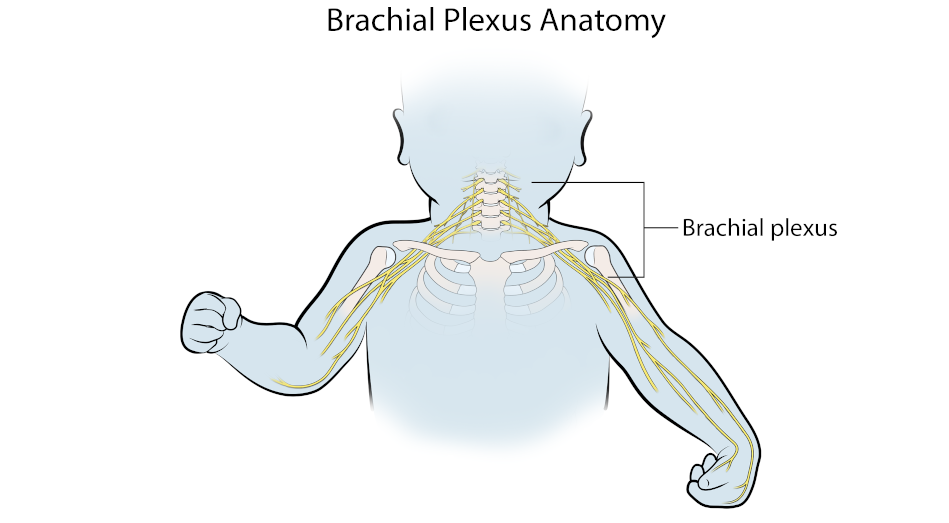Facing the challenges of a brachial plexus birth injury lawsuit can feel overwhelming. The reason is that when babies experience injuries to the nerves in their shoulders during birth, families might seek legal help to understand their options.
This lawsuit is about getting money because of problems during birth that caused these nerve injuries. So, knowing what this lawsuit involves can help families understand how to deal with the legal stuff better. Scroll down to find out more details regarding this lawsuit!
What Is Brachial Plexus?
According to Hopkins Medicine, the brachial plexus is a complicated bundle of nerves that run from the neck to the shoulders. These nerves are responsible for making muscles work in the chest, shoulders, arms, and hands. Moreover, they also help us feel things in our upper limbs, like touch and sensation.
What Is Brachial Plexus Birth Injury?
The brachial plexus is a bunch of nerves near the neck and shoulders that help us feel and move our upper body parts like the chest, shoulders, arms, and hands. When these nerves get pulled, pressed, or torn, it’s called a brachial plexus injury. This can happen during birth and occurs in about one to three out of every 1,000 births.
If the brachial plexus is slightly pulled, the baby might have a small problem that gets better after a few months. But if there’s a bigger injury, the child might have ongoing issues like:
- weakness in the arm or hand;
- less movement or feeling in the arm or hand;
- some parts of the body are unable to move;
- an arm that stays bent toward the body.
Doctors treat these injuries with therapy, medicine, and sometimes surgery. But for some kids, it might mean having a long-lasting problem. This type of injury is a common problem in medical mistakes that can lead to serious consequences.
What Are the Causes?
Brachial plexus injuries often happen during a baby’s birth. They occur when the baby’s head or shoulders get stuck while coming out, causing stretching or tearing in the nerves around the neck. This can also occur if the baby’s head is pushed to one side during birth.
These injuries might be due to factors like the baby’s size, difficult or long labor, and the use of tools like forceps or vacuums. Additionally, it can also happen if the doctor applies too much force while delivering the baby.
If you think your child’s brachial plexus injury happened because of a mistake by a doctor, it could be considered medical malpractice. Therefore, you can consider talking to a birth injury lawyer to understand your options for filing a brachial plexus birth injury lawsuit.
How Do Doctors Find Brachial Plexus Injuries?
Basically, doctors will check the baby’s hand and arm. They’ll check how they feel and move to spot a brachial plexus injury. However, they might also use the following tests for a more thorough examination.
1. An X-ray to check for any broken bones or injuries around the nerves in the neck and shoulder.
2. Imaging tests, like MRI or CT scans, might use dye to show any injuries to the brachial plexus nerves.
3. Test with needle electrodes to see how the nerves work, like a nerve conduction study and electromyogram.
Settlement for Brachial Plexus Birth Injury Lawsuit
If your child has a brachial plexus injury, seeking compensation may help. You might wonder how much money similar cases receive. On average, settlements in ten examples exceeded $2 million. However, every injury is different, so this average doesn’t give a clear picture.
7 Steps to File a Brachial Plexus Birth Injury Lawsuit
It’s essential to act quickly if you want to start filing for legal action concerning brachial plexus birth injury. Here are the seven necessary steps to take!
1. Thinking of the Time Limit
First, you should file a medical malpractice lawsuit for brachial plexus injuries quickly. Each state has a time limit, called a statute of limitations, to file. Thus, mind the time criteria because if this time has passed, you can’t file the lawsuit anymore.
2. Consulting a Lawyer
Speak with a brachial plexus lawyer who can assess your claim’s strength before starting the brachial plexus birth injury lawsuit. They’ll compare the doctor’s actions during childbirth to the standard medical care.
This means checking if the doctor acted like a skilled doctor would’ve in that situation, based on available medical info at that time.
3. Evaluating Doctor’s Actions
It’s really important to find out if the doctor not doing what they should have done which led to the injury. You can check if the doctor’s actions are legally responsible for causing the harm. Basically, figuring this out is a key part of understanding what happened.
4. Gathering Evidence
You and your lawyer must gather evidence to prove your child’s injury was preventable. The evidence includes documenting events before, during, and after birth, collecting medical records, bills, and photos, noting known risks, and identifying witnesses and medical experts.
5. Determining Case Value
Assess the future treatment needs for your child’s injury. For instance, you can plan and calculate the medical costs your child may face throughout life. This way, you can estimate the compensation needed for your case.
6. Lawsuit Process
You need to know that once the brachial plexus birth injury lawsuit starts, it typically takes eighteen months to two years. The duration itself depends on numerous factors, such as jurisdiction, claimed damages, expert involvement, accessibility of medical records, and witness availability.
7. Settlement or Trial
Lastly, your lawsuit can either settle out of court or go to trial. In settlements, the doctor offers compensation to avoid negative publicity and the costs of a trial. Meanwhile, trials may result in higher compensation but aren’t a guaranteed win.
Now You Know How to File a Brachial Plexus Birth Injury Lawsuit!
By filing a brachial plexus birth injury lawsuit, you can seek justice for your child’s injury. The explanation equips you with the essential knowledge to navigate this legal process.
However, always remember that each case is unique, so follow the steps based on your specific situation and consult with an expert in the field. Hence, by taking these steps, you can confidently pursue the necessary actions to secure the best possible outcome for your child.
Bagikan










